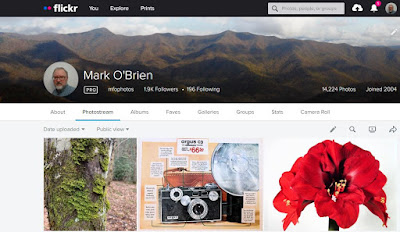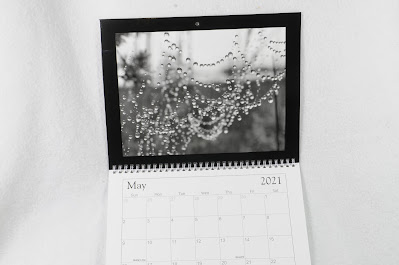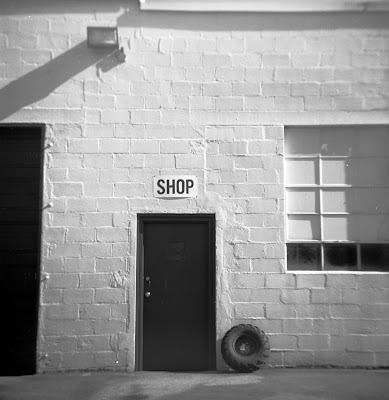As I look back on 2020, it's clear to me that while there are many things I did not do, my lifestyle was not severely impacted. As a retiree, the daily routine was not interrupted. I did not have to worry about children in school, losing my job, working in fear of becoming sick, telecommuting, or traveling to work. So, I consider myself very lucky in that way. Sure, I miss being able to go to a brewery for a quick beer, hanging out with people, and shopping anywhere without having to wear a mask. However, those are not unbearable burdens, merely inconveniences.
The things I could not do didn't prevent me from being creative. like many others, I found myself doing things that were more self-reflective or projects that had been put on hold for various reasons, became important. New ways to do things allowed me to be "social" in a way that I had not done before, and establish new friendships via social media. Before the pandemic hit us, Beverley, Adrienne, and I visited the pretty town of Sylva, where the movie Three Billboards Outside Ebbing Missouri was filmed. Another trip in late February saw Beverley and I visit Selby and Forest City, NC. There were some other trips to Brevard and Biltmore. Looking back, who knew that by the first day of spring, the streets of Asheville would be nearly empty of people, and businesses shuttered?
Instead of doing some long trips around NC and into some other states, I did a lot of day-trips. One of my favorites was the day Adrienne and I drove up to Mt. Airy to witness the emergence of millions of periodical cicadas. Although I had seen them in Ann Arbor, it was nothing like the scale of numbers that we saw that day. I am sure many thousands of cicadas were killed while flying across the interstate. The sound of their combined chorus was incredibly loud, too. Another fun trip was the one to Linville Falls, where I met up with Joseph Brunjes. It was great to get together with another photographer and talk photography while we walked the trails.
Last year, Susan Patrice told me about Rocky Fork State Park in Tennessee. I made my first trip there in May of this year. It's about a 30 minute drive from my house, and I made several more trips there throughout the year. I rarely saw anyone else apart from people driving along the road. It's a fantastic stream with lots of small falls and cascades that are seemingly never-ending, with lots of great photo ops. Likewise, driving along the Blue Ridge Parkway is always a great way to spend a day.
It was a good time to just drive around and explore the countryside, which doesn't involve contact with other people. I drove a lot of back roads and visited a number of small towns that were new to me. So different than driving around flat Michigan.
I produced two issues of Monochrome Mania during the pandemic. Issue 2 was about photographing on various trips around Michigan, and issue 3 is all about medium-format toy cameras. Number three required a lot of work in acquiring cameras to test, shooting with them, researching the history of different models, and of course, going through my older work to choose some images for the magazine. I ended up separating all my toy camera negatives and organizing them in binders. It will make any future work with them far easier.
Going through my earlier work has been very productive and enlightening. I have been scanning in a lot negatives that have not been scanned, and in the process found some images that I had forgotten about, and feel different about them now than when I made them. Sometimes it's good to be removed from the immediate, emotional connection that comes with making a photo. In doing so, I found some very good images, as well as some really awful ones. I have also been winnowing out some of the boxes and boxes of 35mm color prints. In retrospect, some are just not worth keeping. Many were made when I was just testing out cameras, and have lost their relevance. Images of family, pets, and events are certainly wonderful to have, but not all are worth the space it takes to store them.
I made some new friends due to Instagram, and my work with the Film Photography Project. In fact, Mike Raso's efforts to keep podcasting during the pandemic prompted him to try some new things like producing You Tube videos. Using Zoom to record the podcast episodes was a lot of fun, and ALMOST as good as being there in person. Mike is a perfectionist in his production of the episodes, and the audio quality of internet interactions does not match what one gets in the studio with pro-grade mics and equipment. Nonetheless, the podcasts and videos are really good. I also got to listen to a lot of other podcasts this year, and my favorite podcast (after the FPP, of course!) is All Through A Lens podcast with Eric and Vania. It's a great podcast that covers a myriad of topics, and has introduced me to some photographers' works that I'd never heard of before it was on the ATAL podcast. Also, the banter between Vania and Eric is a lot of fun. Both are passionate photographers, and it shows in the attention they pay to processes and technique as well as just having fun doing what they love.
Another bright spot this year was the continued popularity of film and the explosion of interest in 8mm film. I can't speak to the movie-making, as it's not my thing, but Mike tells me that the demand has been amazing. As far as still-photography, there seems to be amped up interest in alt-processes as well as conventional ones. While the digital world is having its battles with SLRs vs mirrorless, or full-frame vs cropped sensors, or Canon vs Nikon, we film users are happily shooting away with our various cameras, formats, and films, and it's all good. The only controversies seem to be about the price increases from Kodak, and the dearth of home C-41 kits. The film shooting community is filled with people that are passionate about their medium, and also filled with people that are helpful, generous, and very creative.
Speaking of social media, I see that there is a lot of resentment of Instagram's policies regarding censorship of images. I know that photographers feel that their work should be shown without censorship, and I agree. If your work is likely to be censored or removed for what IG feels violates "community standards" I suggest that you use Flickr. Flickr remains the best place to share your work, and I have been using it since 2004. For me, it's an incredible way to archive my work, and at $50 year it is still a good deal.
Those are a few thoughts on the year. It was a memorable one, in ways that we could not have anticipated, and I hope, as everyone does, that 2021 will be an improved one. Best wishes to you all for a Happy New Year, and get out there and take some pictures!


























































